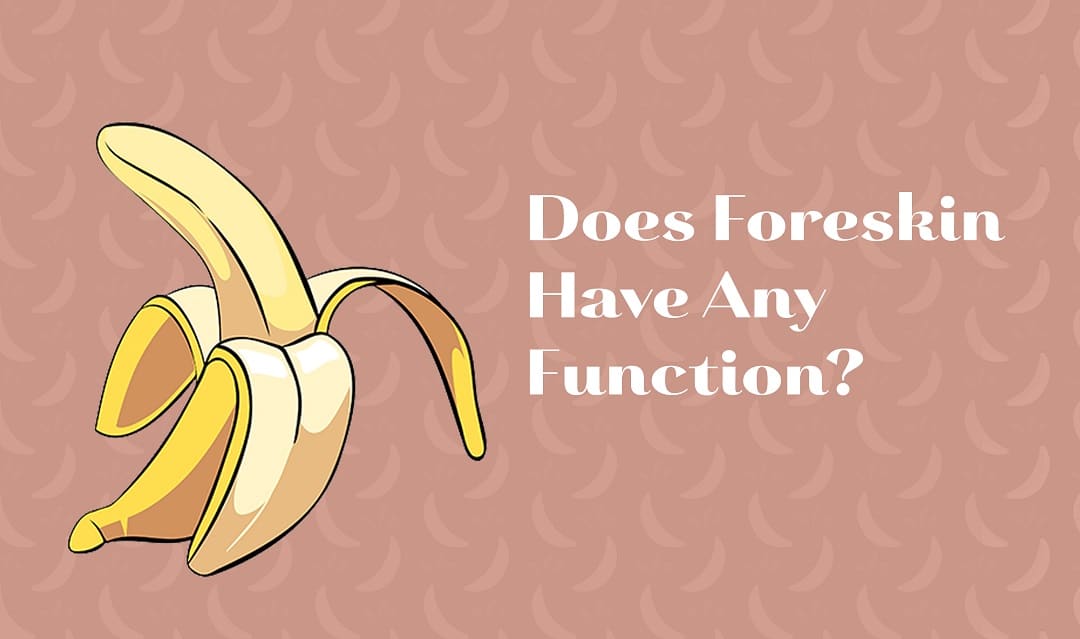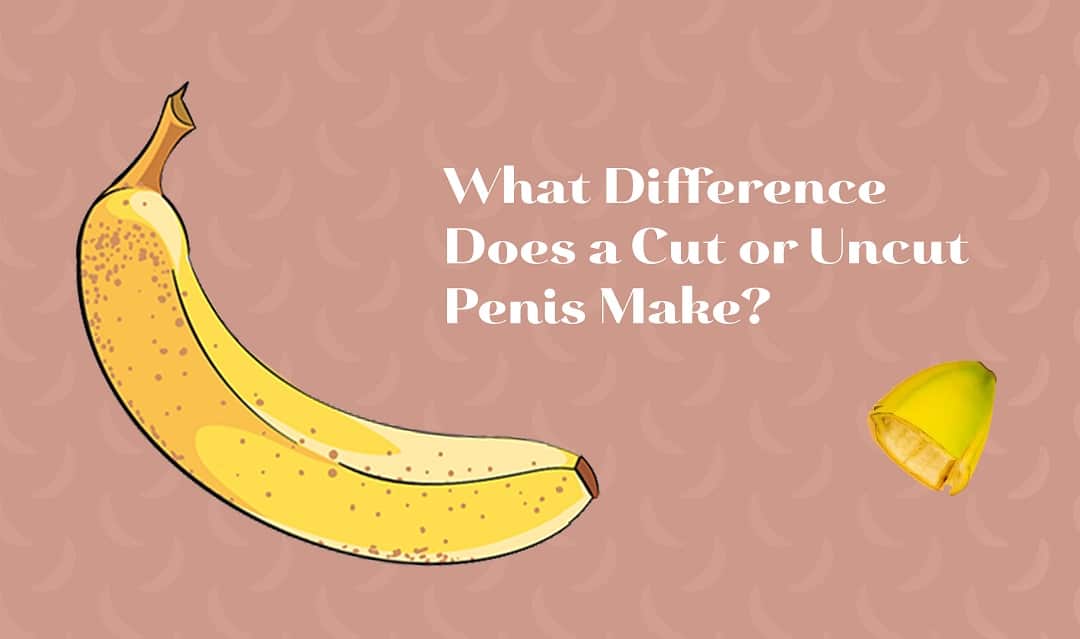Circumcised Vs Uncircumcised Penis – Does It Matter?

What is the difference between circumcised and uncircumcised penis? – is the most commonly asked question among those who aren’t familiar with the process. The foreskin or the hooded covering on the head of the penis is normal anatomy. Circumcision is a surgical procedure that removes the foreskin of the penis.
It is done for religious reasons among the males, including infants and young males, of the Jewish and Muslim communities. Many adults also undergo circumcision for hygienic or aesthetic reasons. It is estimated that about 39% of men globally and about 71% of the male population in the United States are circumcised.[1]
Table of Contents
Does Foreskin Have Any Function?

The foreskin is fused with the glans at the time of birth and separates over a period during the initial few years of life. During this phase, it serves a crucial function – protection against chafing from diapers. Apart from this, it helps protect glans from trauma or injury, plus keeps glans moist & soft throughout life. After puberty, it aids in sensory and sexual pleasures. The inner foreskin & frenulum are highly sensitive and assist in sexual pleasures.[4]
How is it Done?
- The base of your penis will be injected with a local anesthetic.
- A special apparatus shaped like a bell is used to hold the head of the penis in place.
- The doctor starts by making an incision and then trimming the entire foreskin.
- The detached foreskin gets wrapped over the device.
- The exposed edges are then stitched up and covered with petroleum jelly and a bandage.
- Presently, laser circumcision is being preferred for being less invasive.
What Difference Does a Cut or Uncut Penis Make?

When talking about the circumcised vs uncircumcised, the main difference is the absence or presence of the foreskin on the penis head. Apart from this, having a foreskin or not may affect hygiene.
Numerous myths are associated with the circumcised penis. We are here to put some light on what is normal and what’s not.
Appearance
How do you know if you are circumcised? Your penis will have exposed glans (the tip of the penis), with and without an erection. If you are not circumcised, the glans of the penis will be covered with a foreskin that gets stretched back on attaining an erection to expose the glans.
Size
Does circumcision affect size? Well, It doesn’t. The size of your penis is determined by your genes and the ease of flow of blood to the penile tissue. (Read more about How To Make Your Penis Bigger?) Removing the foreskin will not have any effect on your penis size. Having a foreskin will make your penis appear bulkier when it is not erect. On having an erection the foreskin gets pulled back completely.
Hygiene
The cut and uncut penis also differ in the hygienic perspective. An uncircumcised penis requires more care while bathing to maintain the hygiene level. Sweat, dead cells, and dirt can start accumulating under the foreskin leading to a thick buildup known as smegma. Many conditions such as inflammation of the penile head (balanitis) and posthitis may result because of smegma. In a circumcised penis, maintaining good hygiene is relatively easier as you just need to wash the penis while bathing.
Skin Irritation
Without a foreskin, the glans is always exposed which makes it prone to getting dry, irritated, or chafed when the clothing is tight. This discomfort is not faced by men with uncircumcised penis. However, you can avert this condition by wearing underwear of a comfortable fit and avoid wearing tight trousers.
Infections
Circumcising the penis lowers your chances of acquiring urinary tract infections. Moreover, men with the cut penis have less risk of contracting ulcerative sexually transmitted diseases such as herpes & syphilis, and their potential of getting HIV (Human immunodeficiency virus) reduces by approximately 50%.[2]
Prevention of Cancer
Uncircumcised men have a greater risk of obtaining penile cancer because of the formation of a layer of smegma or infections. Apart from this, the uncut men have odds of getting human papillomavirus (HPV) infection which, when transferred to women, is known to cause cervical cancer.[3]
Fertility
Removal of foreskin does not impact sperm value, semen volume, or fertility. Sperm is produced in glands present in the testicles. The sperm content and semen volume depend on what you eat, your lifestyle, and many other factors. (Read more about it here – How to Increase Semen Volume)
Sensitivity
In the case of an uncut penis, the foreskin is very sensitive to stimulation by touch. But no data suggests that a cut penis will experience any hindrance in sexual sensitivity. Circumcision doesn’t affect sexual pleasure at all. Many issues can be causing penile sensitivity issues such as lowered testosterone levels, medicinal side effects, mental health issues, etc. Have a glance at 5 Easy Ways To Increase Male Sensitivity to find out more.
Libido
Circumcision does not impact the sexual drive in any way. On the contrary, it may help those suffering from premature ejaculation. Removing the foreskin from the penis desensitizes the penis, which results in delayed ejaculation.
Lubrication
During sexual intercourse, natural lubrication is provided by the foreskin. But there is no substantial data available suggesting that a circumcised penis will require any supplementary lubrication for sexual activity. Extra lube will, however, be needed when indispensable, like in activities such as anal sex.
How To Take Care of Uncircumcised Penis?
Wash and clean it properly when you are taking a bath.
- Wash the head of the penis by pulling back the foreskin.
- Clean inside the folds of the foreskin with water.
- After cleaning, pull back the foreskin to cover the head.
- Avoid using soap as it may irritate the sensitive skin of the internal foreskin or penile head.
For the small uncircumcised penis of infants and children, do not forcefully pull back the foreskin to fasten the process of loosening it for cleaning. It may seriously damage the tissue and interfere with the natural process of separation of glans and foreskin.
To Conclude
Does circumcision make you bigger? Does it affect length? Will it affect your sexual life? Circumcision does not impact your sexual life or the size of your penis. Whether you want to get circumcision or not is your personal preference. The main difference is that when uncut, you have to be more cautious of the hygiene of your penis to reduce the odds of acquiring infections. But, irrespective of being cut or not, think about using barrier protection when required to protect yourself against sexually transmitted disorders.
Frequently Asked Questions
Q. What does cut or uncut mean?
- When the foreskin covering the head of the penis is removed by a surgical procedure, the penis is called a cut penis. A penis with natural anatomy, foreskin covering the glans, is known as an uncut penis.
Q. Is circumcision safe?
- It is generally considered a safe medical procedure, with risks of complications in about 2% of the cases. However, it should be noted that the odds of complications arising increase when the surgical procedure is carried out under sub-par standards.
Q. Will circumcision affect the length of my penis? Does it decrease?
- Circumcision does not impact the length of an erected penis. It will not make it bigger or smaller. The foreskin may make your penis look bulkier when it’s flaccid, but it does not add to the length it’s erected.
Q. Are there any risks associated with the procedure of circumcision?
- As is the case with any surgical procedure, circumcision may result in some complications such as infection of the surgical stitches, or burning sensation while urinating. Though extremely rare, there are risks of some severe complications like damage to penile tissue or nerve endings.
Q. What is the recovery period after circumcision?
- Children and adults may take up to three weeks to heal while in infants the healing process takes around ten to fourteen days.
Q. Can circumcision be reversed?
- Yes. Restoration of the foreskin can be carried out with the help of a surgical procedure. There are some claims about nonsurgical methods as well but without any evidence backing it. Surgical restoration comes with risks and a lot of expenses. Moreover, it takes time for visible results.
References
- Morris BJ, Wamai RG, Henebeng EB, et al. Estimation of country-specific and global prevalence of male circumcision [published correction appears in Popul Health Metr. 2016;14:11]. Popul Health Metr. 2016;14:4. Published 2016 Mar 1. doi:10.1186/s12963-016-0073-5 https://www.ncbi.nlm.nih.gov/pmc/articles/PMC4772313/
- Morris BJ, Krieger JN, Klausner JD. CDC’s Male Circumcision Recommendations Represent a Key Public Health Measure. Glob Health Sci Pract. 2017;5(1):15-27. Published 2017 Mar 28. doi:10.9745/GHSP-D-16-00390 https://www.ncbi.nlm.nih.gov/pmc/articles/PMC5478224/
- Effect of male circumcision on risk of sexually transmitted infections and cervical cancer in women. Brian J Morris, Catherine A Hankins Open AccessPublished: November, 2017DOI: https://doi.org/10.1016/S2214-109X(17)30386-8
- Warren and Bigelow. British Journal of Sexual Medicine, Sept/Oct 1994. http://www.cirp.org/library/general/warren2/
Disclaimer
HisBlue is not a substitute for professional medical care or advice from your doctor. The health information on the HisBlue website is general and provided for your information only. We have ensured our content is accurate and current, with reviews by expert doctors. However, we cannot guarantee its accuracy or timeliness. This information is not meant to replace the diagnosis, treatment, or judgement of your doctor or another qualified healthcare provider.


